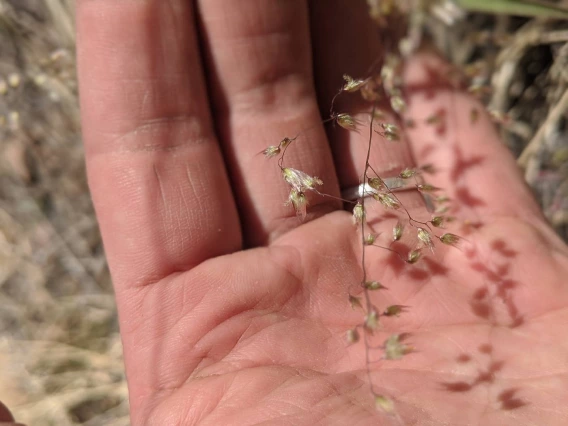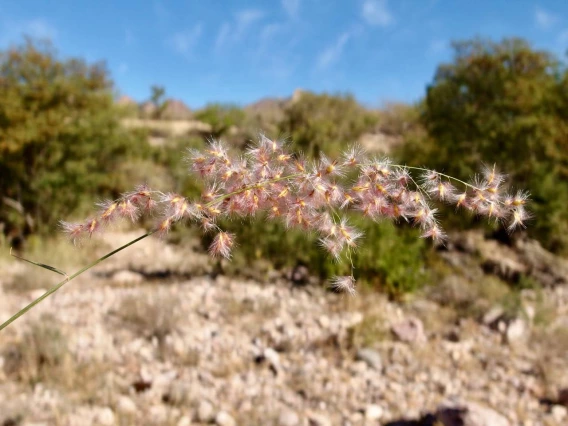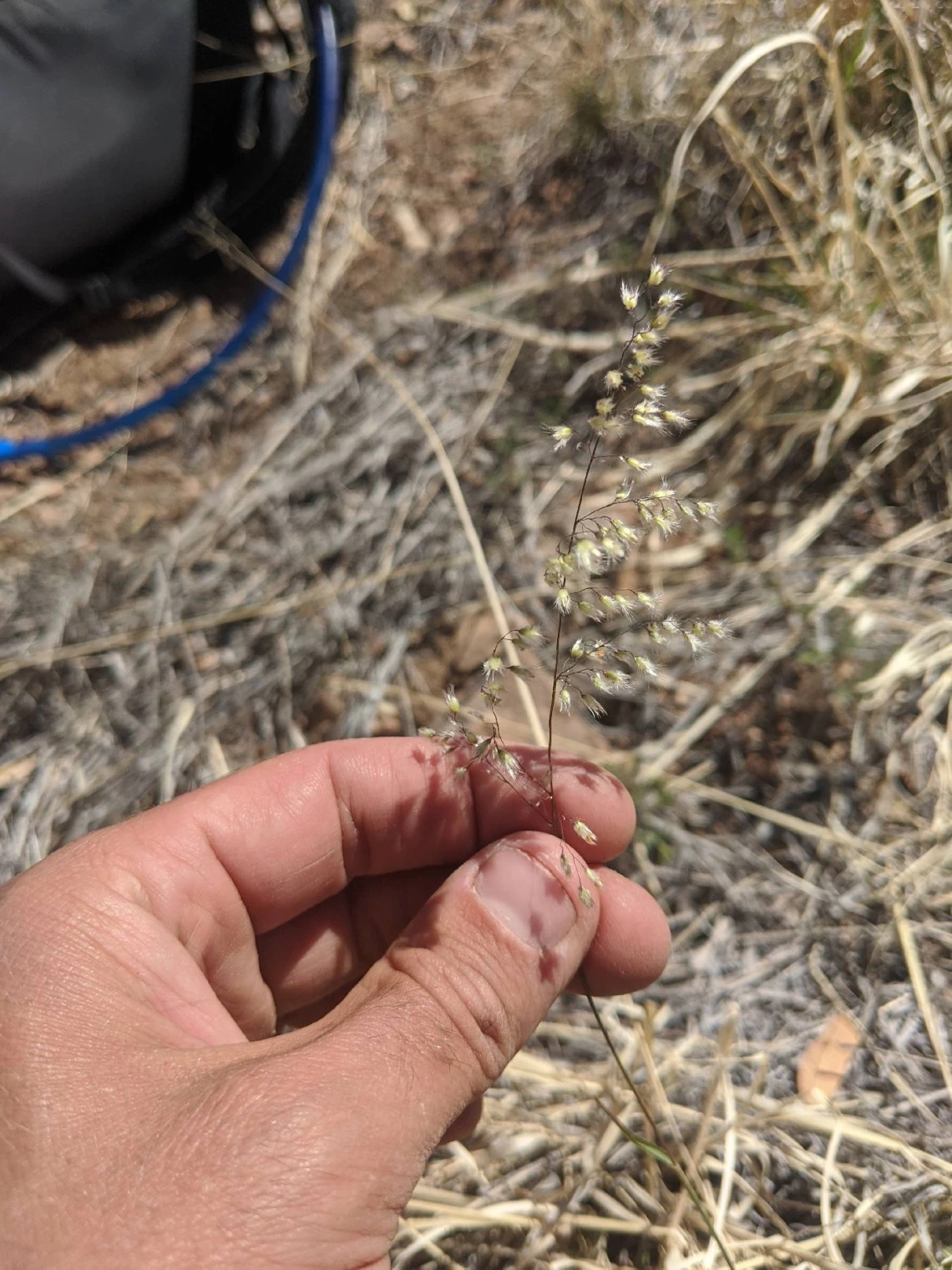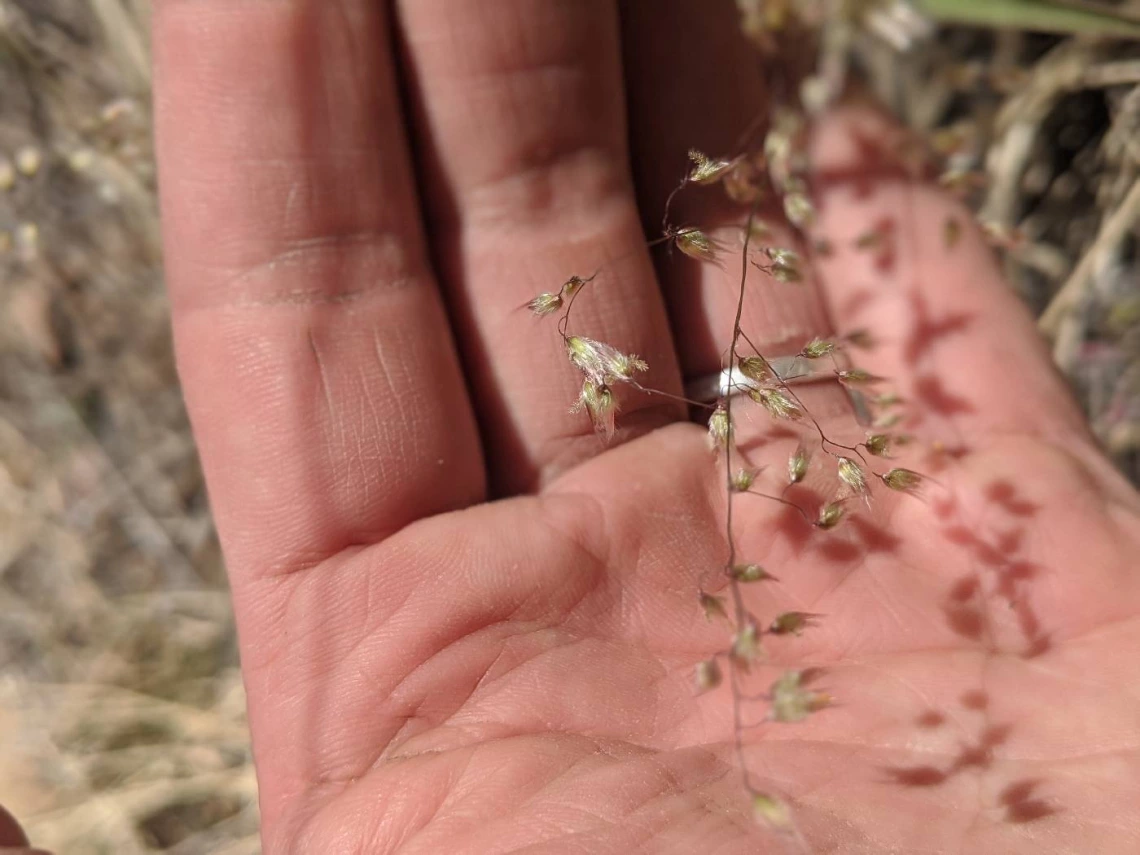Image

G Molina
Common Name(s)
Natal grass
Rose Natal grass
Natal red top
Ruby grass
Scientific Name
Melinis repens
Family
Grass family (Poaceae)
Reasons for concern
Due to its large, dry biomass, natal grass fuels dangerous fires. Natal grass is a competitive grower, which inhibits the growth of important native species.
Classification
Class B Noxious Weed, categorized as a species of plant that is known to occur, but of limited distribution in the State and may be a high priority pest for quarantine, control or mitigation if a significant threat to a crop, commodity, or habitat is known to exist.
Botanical description
erect annual grass with a notable ornamental inflorescence
Leaves
1-7 inch long thin blades with short hairs
Stem(s)
1-6 feet tall with some small hairs in between nodes
Inflorescence
Silvery to pink fluffy panicle 2-8 inches long, 1-5 inches wide, either arching or triangular, composed of tiny hairs and spikelets. Turns brownish gray with maturation
Roots
roots at lower nodes.
Native to
Southern Africa
Where it grows
grasslands, roadsides, disturbed areas
Lifecycle
perennial or annual
Reproduction
by seed
Weedy Characteristics
Natalgrass can seed throughout the year. These seeds can travel large distances via water, wind, animals, and humans.
Look-alike Plants
Plains lovegrass (Eragrostis intermedia) has a more spread out inflorescence. The spikelets themselves are smaller and have less fluffy hairs
Control Strategies
Avoid planting as an ornamental. Hand pulling is effective







